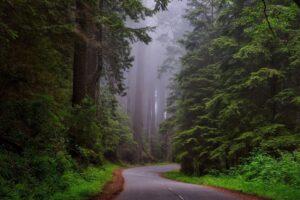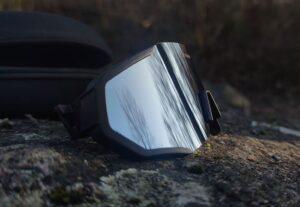Water is an essential part of any backpacking expedition, and you need to plan out your water requirements for the entire trip. Planning should include how much water you need per hour of hiking and per day, as well as how to find water on a multi-day hike and clean it.
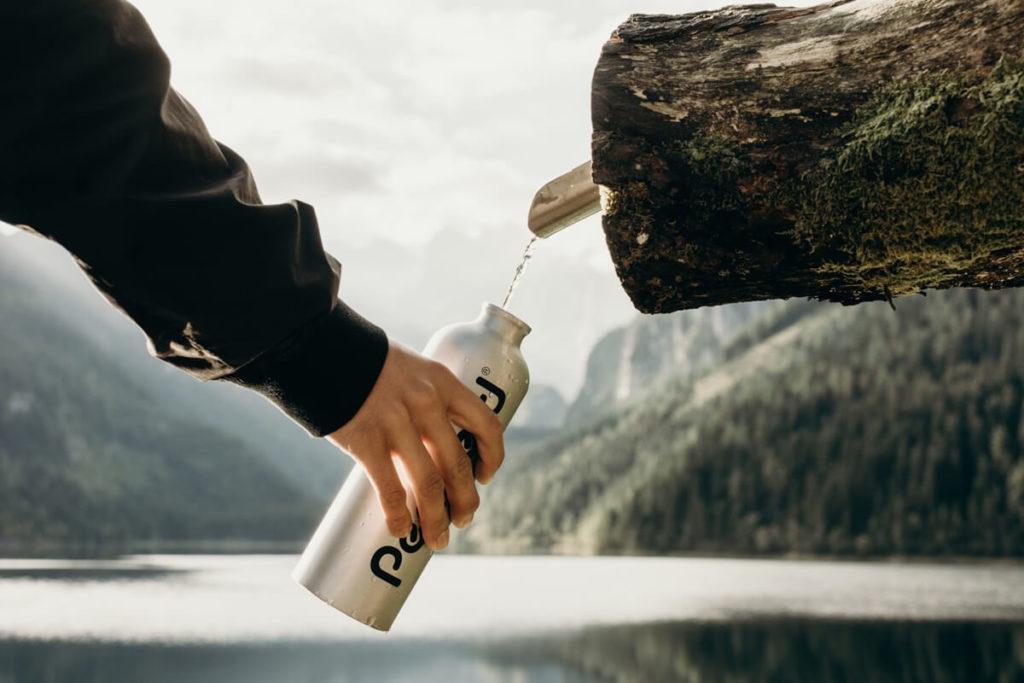
If you’re carrying too little water, you may become dehydrated, which could lead to confusion, walking off the trail, and getting lost. On the other hand, if you carry too much water, it’s going to weigh you down and make your hike much harder than it needs to be.
How Much Water Should You Carry?
How much water you carry depends on a few factors and decisions you’ll need to make before starting your backpacking trip. For example, how long is your hike, will you use outside sources of water, and how much water will you need before you can resupply.
The standard for water requirements is that you need 16 oz of water for every 1 hour you’re hiking, and you need 1 gallon of water per day. These requirements can charge based on your size, the temperature, your age, and how strenuous the hike is.
- 1 gallon of water weighs around 8.3 lbs
- 16 oz of water weighs about 1 lb.
You should be carrying 1 gallon of water throughout the day, or you should be refilling and purifying water from outside water sources, such as rivers, streams, lakes, ponds, and anything else you find prior to your backpacking trip so that you have enough water to cover your hourly and daily requirements.
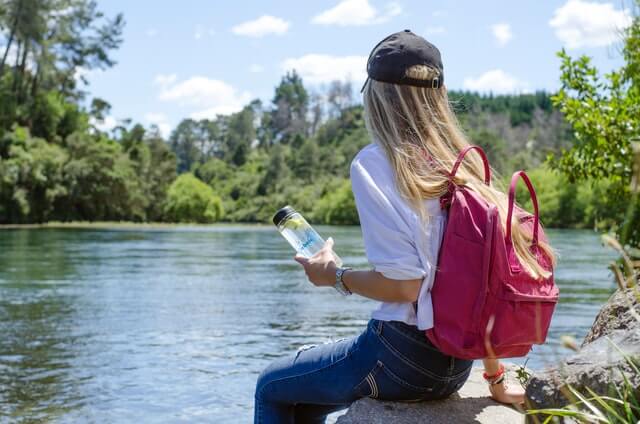
Pro-tip: You can pre-hydrate before you go out hiking for the day so that your body gets immediate access to the water, and you don’t need to carry as much water on your back throughout the day. Consider drinking around 32 oz of water as your wake up and have breakfast.
You should also try to sip your water throughout the hike and day, as consuming too much at once will lead to the water passing through you much quicker.
Backpacking Water Carrying Plan
If you need 1 gallon of water throughout an entire day, you’ll need 1-gallon x the number of days you’re backpacking, which is not feasible to carry for more than 1 day at a time, so you’ll need to come up with a plan before you leave and rely on water sources along your hiking route and daily destinations.
Find Water Sources
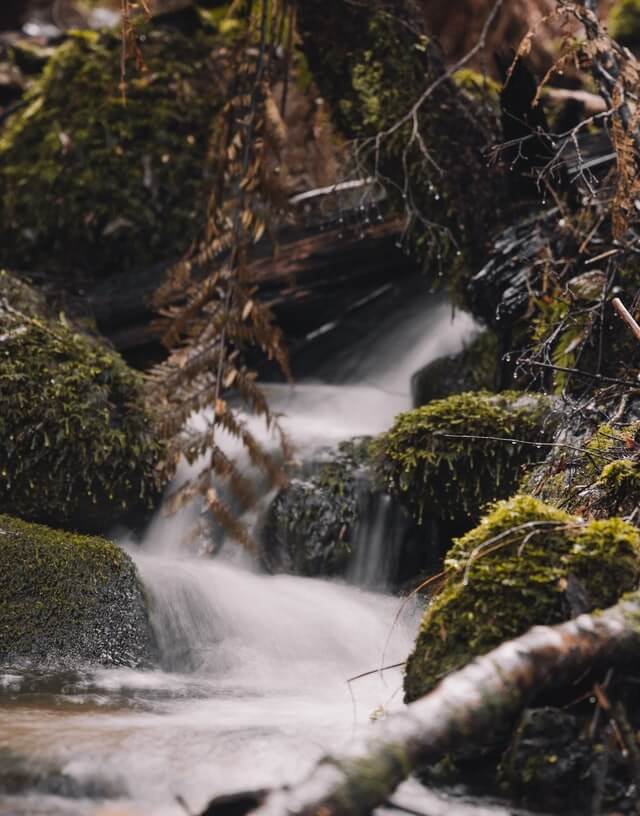
Your first step is to find all of the water sources along your route; you should track them all but try to pick the best water sources with the cleanest water, this is typically larger rivers or streams that have flowing water, but that’s not always possible when backpacking.
- Check Google Maps of your route to find water sources along the way.
- Check guides and websites about the hike or area you’re backpacking in.
- Take a look at backpacking or hiking forums or reddits to get up-to-date information.
Determine Distance Between Water Sources
You then need to determine how long it will take you to hike between each water source. In best-case scenarios for the average adult, you can hike around 1 mile within 30 minutes, but if there is elevation, then you’ll take longer, around 30 minutes for every 1,000 feet up.
So, 4 miles between water sources with 1,000 feet in elevation would take you 2 hours and 30 minutes to complete in the best case scenario with no stops and reasonable terrain.
Calculate Required Water Between Water Sources
If you need 16 oz of water for every 1 hour of hiking and you’re going to be hiking for at least 2 hours and 30 minutes, then you’ll need to be carrying at least 40 oz of water in the example.
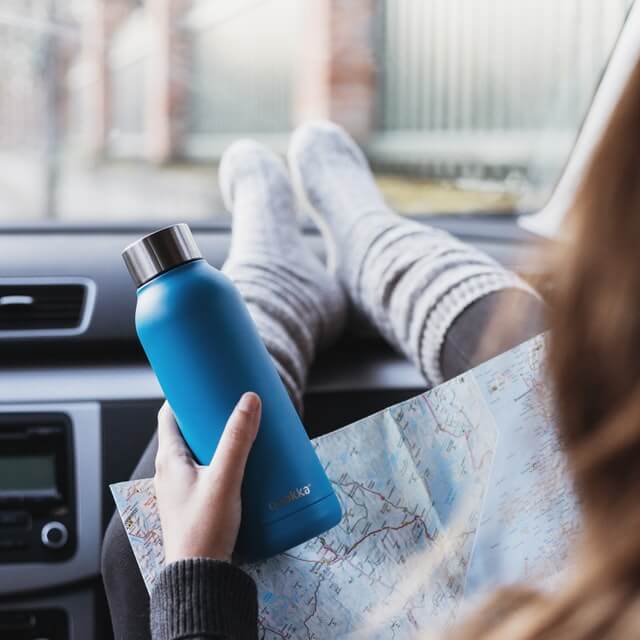
You’ll need to make these calculations for every section of your backpacking trip between the water sources and then track that while you’re out on the trail.
You can certainly carry a full gallon of water for the day, and as the day goes on it will become lighter, but it’s still a heavy container that you need to hold on to throughout the day.
Filtering Water Sources While Backpacking
How much water you carry also depends on how comfortable you are with the different filtering methods available on the trail. You may not be comfortable with the on-the-go options as you hike between water sources, so you may be back to carrying 1 gallon of water per day.
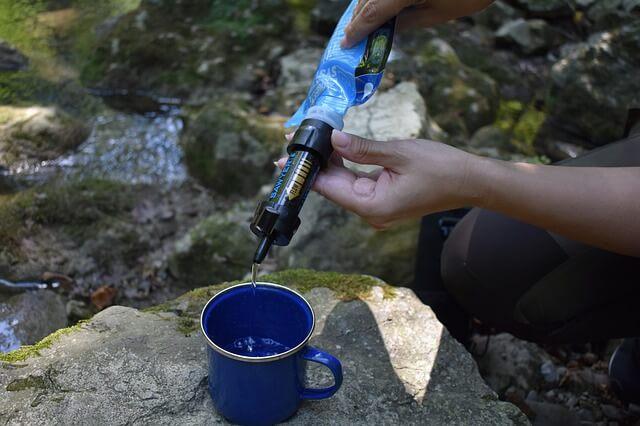
You have three main options when filtering your water sources, including:
Boiling your water is the best method to kill any organisms that may be living in the water. In an ideal world, this is the method you’d use for all of your water sources to ensure you don’t get sick. Boiling water requires time to boil and then cool the water, and you’re going to be using your fire fuel, such as gas, or have to build a fire each time you want to filter the water.
Chemical filtering is an easier option; you can buy water filtering tablets from outdoor stores or Amazon if needed. You only need to put a tablet into the water between 30 – 60 minutes for the cleaning to complete. Most chemical filtering will kill bacteria and viruses but won’t kill parasites, so it’s a less effective method but still a good one.
Water bottle filters don’t kill anything in most cases but strain everything out down to a certain size, similar to how masks work. So finding the smallest filters will give you the best results and also indicate what the water bottle can filter out. Some of the better water bottle filters add a chemical filtering component so that you get maximum benefits against more organisms.
How comfortable you are with the filtering methods will help you determine how much of your 1 gallon of water each day you need to carry, either the full gallon or just enough to get you between each water source.

